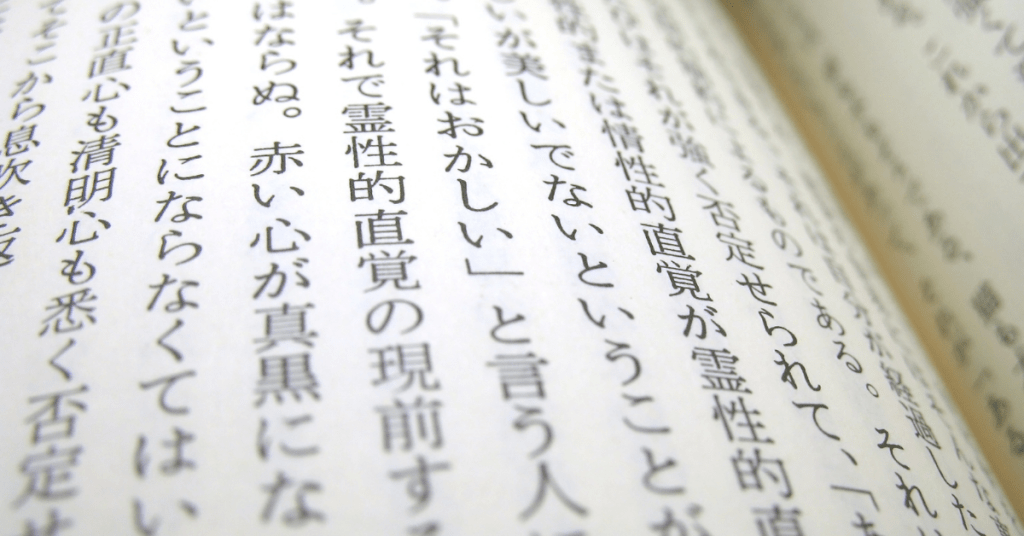
Learn Reading Japanese Books in 25 Days: A Complete Guide
Reading Japanese books isn’t a joke for a non-native speaker. But our 25-day plan will make the process straightforward and simple for you.
Authentic Info Guaranteed
Are you an avid bookworm, always on the hunt for new and exciting literature? Have you ever been intrigued by the beauty of Japanese literature but felt overwhelmed by the complex characters and symbols?
Well, you’re in for a treat! In this comprehensive guide, we will take you on a journey to learn how to read Japanese books in just 25 days. Whether you’re an aspiring polyglot or a literature enthusiast, we’ve got you covered.
Table of Contents
ToggleDay 1-5: Master the Japanese Script
Before you dive into the captivating world of Japanese literature, it’s crucial to become familiar with the Japanese writing system. Japanese employs three main scripts: Hiragana, Katakana, and Kanji.
Day 1-2: Hiragana
- Start by learning the basic 46 characters of Hiragana.
- Practice writing them in stroke order and master their pronunciation.
- Use mnemonic devices or online resources to make memorization fun and engaging.
Day 3-4: Katakana
- Similar to Hiragana, Katakana has 46 characters.
- Focus on distinguishing between Hiragana and Katakana characters.
- Practice reading simple words written in Katakana.
Day 5: Introduction to Kanji
- Begin your journey into the world of Kanji, the most complex script.
- Learn a few basic Kanji characters and their meanings.
- Understand the radical system, which will be your key to unlocking the vast world of Kanji.
Day 6-10: Building Vocabulary
With the scripts under your belt, it’s time to start building your Japanese vocabulary. Here’s how:
Day 6-7: Basic Words
- Start with common, everyday words and phrases.
- Use flashcards and apps to memorize vocabulary.
- Practice writing and pronouncing words in Hiragana and Katakana.
Day 8-10: Reading Materials
- Begin with simple children’s books or graded readers.
- Take your time reading sentences and paragraphs, applying your newly learned vocabulary.
Day 11-15: Grammar Essentials
To read Japanese books fluently, you need a solid understanding of Japanese grammar.
Day 11-12: Particles and Sentence Structure
- Learn essential particles like “は,” “の,” “で,” and “を.”
- Understand how Japanese sentence structure differs from English.
- Practice constructing basic sentences using your vocabulary.
Day 13-15: Verb Conjugation
- Dive into verb conjugation, a fundamental aspect of Japanese grammar.
- Study verb groups (Ichidan and Godan) and their conjugations.
- Experiment with different verb tenses and forms in sentences.
Day 16-20: Reading Comprehension
Now that you have a strong foundation in Japanese language and grammar, it’s time to focus on reading comprehension.
Day 16-18: Short Stories and Essays
- Read short stories or essays in Japanese.
- Take your time to understand the context and meaning of the text.
- Use a dictionary or online translation tools to aid comprehension.
Day 19-20: Graded Novels
- Progress to graded novels suitable for your level.
- Start with easier ones and gradually move to more complex texts.
- Focus on understanding the story and characters.
Day 21-25: Diving into Authentic Japanese Literature
Congratulations! You’ve reached the final phase of your journey. Now, it’s time to tackle authentic Japanese literature.
Day 21-22: Choose a Japanese Book
- Select a Japanese book that aligns with your interests and language proficiency.
- Ensure it has Furigana (pronunciation guides) for Kanji, especially if you’re not confident with Kanji yet.
Day 23-25: Reading an Authentic Japanese Book
- Begin reading your chosen book.
- Take notes on unfamiliar words or Kanji.
- Dedicate time each day to reading and make sure to enjoy the story.
Bonus Tips:
1. Join language exchange groups or forums to interact with native speakers.
2. Consistent practice and exposure to the language are key to your success.
- 3. Keep a journal to record new words and phrases.
Conclusion
Learning to read Japanese books in 25 days is an ambitious goal, and it may vary depending on your starting point and dedication. However, by following this guide, you’ll be well on your way to experiencing the rich literary world of Japan.
Remember, learning a new language is a journey, and every day you spend learning brings you closer to your goal. So, embrace the challenge, savor the journey, and let the words of Japanese literature transport you to new worlds. Happy reading!
Frequently Asked Questions
Japanese books are traditionally read from right to left because the Japanese writing system, which includes characters and symbols, is traditionally arranged in a vertical, right-to-left format.
Yes, Japanese books are read back to front in the sense that they are opened from what many people in Western countries would consider the “last” page. The first page of a Japanese book is on what is typically the right-hand side when you open it.
You can start reading Japanese books when you have a basic understanding of the Japanese script (Hiragana and Katakana), a modest vocabulary, and some knowledge of grammar. It’s advisable to start with simpler materials and gradually progress to more complex ones as your skills improve.
To read a Japanese comic book (manga), start by familiarizing yourself with the right-to-left reading direction. Read the dialogue bubbles in that order, and use context and visual cues to understand the story.
To read Japanese books on an iPad, you can use e-reader apps like Apple Books or apps specifically designed for reading Japanese content. Download books in Japanese, and the apps will display the text correctly in a right-to-left format.
To read Japanese books on Kindle, you can change the device’s language settings to Japanese and download books in Japanese from the Kindle store. The text will be displayed from right to left, but Kindle software supports this format.
Related Posts

